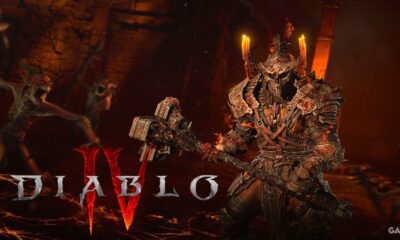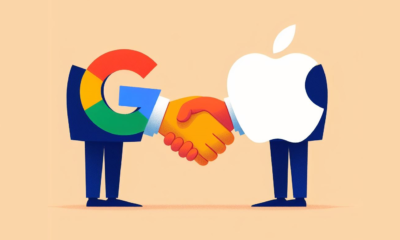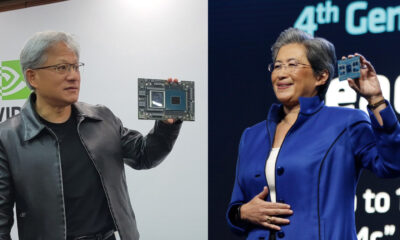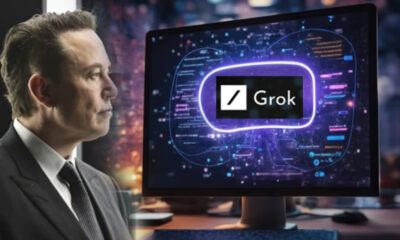AI
The story of AI revolution frontline workers: The only way is to embrace adaptation if you don’t want to fall behind
“The rapid acceleration of AI development emphasizes the need for humans to adapt in order to avoid being left behind.”
“Rafael Rodríguez Deustúa earns a living through freelance advertising design on the 99designs platform. His works primarily embrace a modernist style, a flexible blend of the new and the old, the East and the West.
Sharing with Rest of World, Deustúa mentioned that he is currently working in Guadalajara, Mexico. Most of his clients are newly established companies or small businesses in the United States. He also has some loyal clients in Europe and Australia.
However, recently, Deustúa, like many creatives worldwide, has faced a new competitive opponent: artificial intelligence. 99designs now allows designs created by AI to have access to clients.”
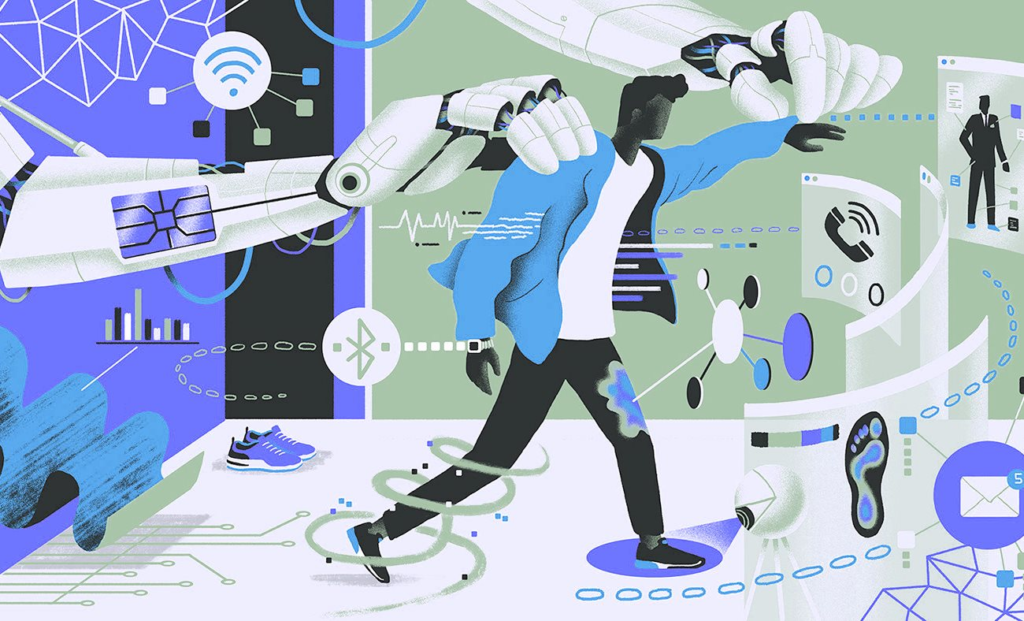
A March report by Goldman Sachs revealed that over 300 million jobs worldwide could be disrupted by AI, while global consulting firm McKinsey estimated that at least 12 million Americans will have to change professions by 2030.
Furthermore, between 2030 and 2060, half of today’s jobs are expected to be automated. The World Economic Forum estimated that 83 million jobs globally will be lost in the next 5 years due to AI. Additionally, 44% of workers’ core skills are expected to change.
One of the most vulnerable groups is outsourced employees. Rest of World had the opportunity to speak with these employees, who work in various industries. They all share the view that artificial intelligence (AI) has significantly altered their monthly income.
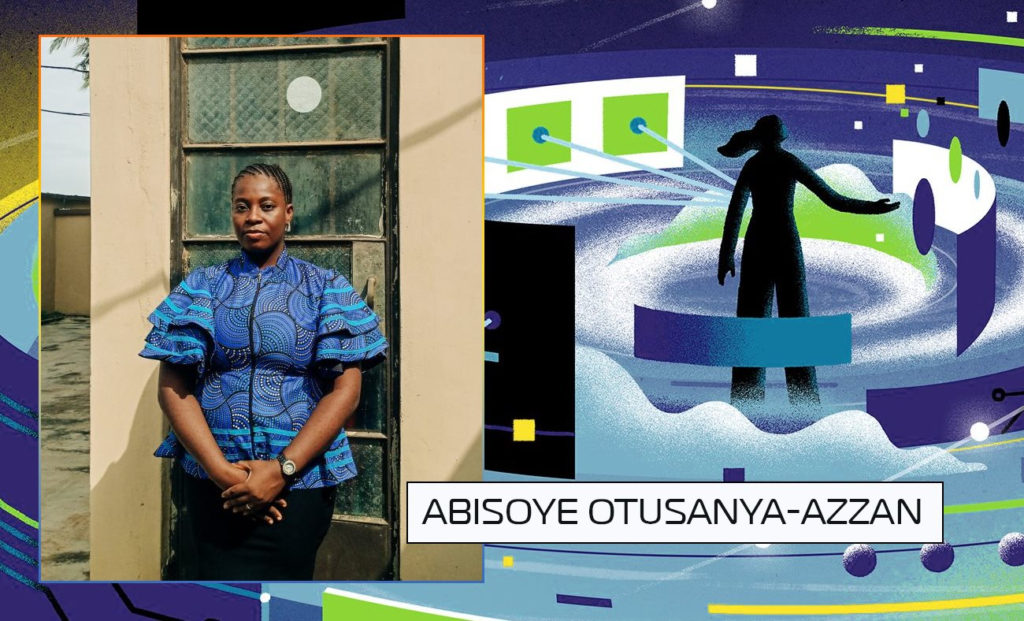
Abisoye Otusanya-Azzan is one of the individuals interviewed by Rest of World. The 29-year-old began writing in 2020, primarily focusing on marketing content for companies in the UK and the US.
When ChatGPT was introduced, Abisoye tried using this tool but was dissatisfied, stating that there were still too many errors.
“I don’t fully trust ChatGPT,” Abisoye said.
In theory, AI could alleviate the burden for content creators like Abisoye, but in reality, this technology led to her being laid off. Instead of hiring freelancers, many companies opt for ChatGPT to save costs.”
“Many customers opt for AI tools instead of hiring copywriters like myself,” Abisoye said sadly.
To cut costs, Western businesses have long sought to hire inexpensive outsourced employees. Research on 11 platforms similar to 99designs shows that India, Pakistan, and Bangladesh are among the preferred regions. The clients mostly come from the US, Canada, Australia, and the UK.
Rest of World conducted a survey with over 31,000 professionals in the technology, finance, and communications fields through the Blind platform. The majority of them were employed by major tech companies in Silicon Valley in the US, India, the EU, and Canada.
76% of survey participants stated they believe AI in general will lead companies to reduce costs. 63% predicted that companies will hire fewer people. While 56% mentioned they are using AI to improve work efficiency, only 24% expressed some concern or significant worry about the risk of unemployment.
Instead of hiring expensive traditional artists, businesses can utilize “AI artists.” The prices typically range from $15-60 per design. Moreover, instead of seeking specialized content writers for advertisements, these companies can also purchase a large quantity of texts generated by AI. In Bangladesh, customers can buy up to 1,000 articles on the same topic. An order of 120 articles written by GPT-3 costs approximately $90 with a commitment to non-plagiarism.

For over 7 years, Santiago Bautista González has been selling cartoon-style paintings. His monthly income is around $1,500, but it unexpectedly dropped by 30% in January this year. AI turned out to be the ‘culprit’ after the Fiverr platform he often uses introduced the ‘AI artist’ feature.
However, instead of sitting idly and complaining, Bautista decided to use AI to make money. ‘On the very first day of using this new service, I made sales,’ Bautista said, adding that artificial intelligence helped him save time and compensate for the lost income. He is not afraid that AI will take away his job.
‘You will need AI,’ he said. ‘If AI can do everything faster and more efficiently, I’ll make a lot of money while putting in less effort.’
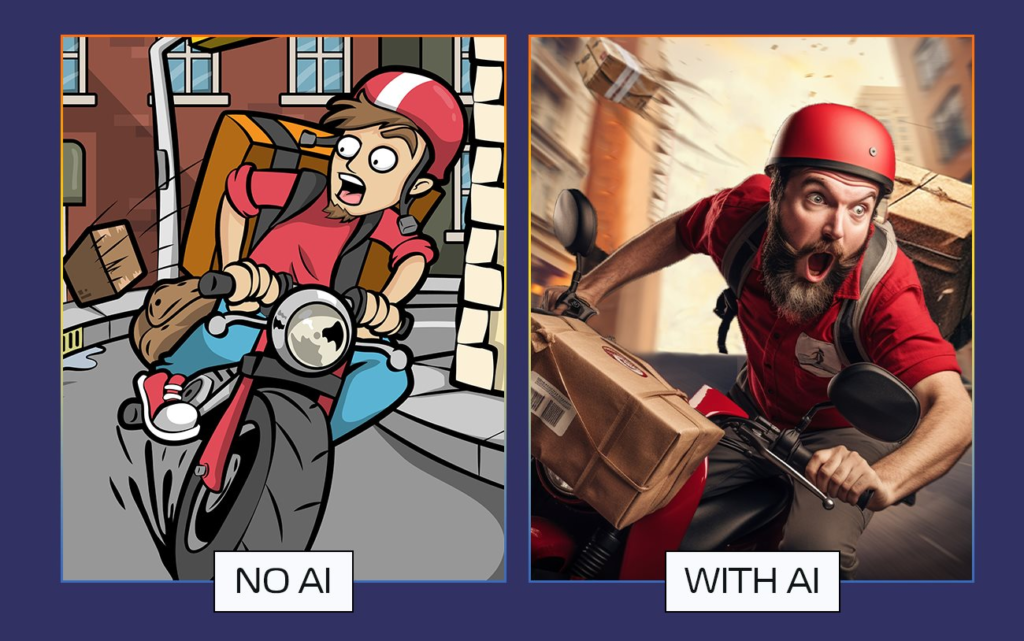
A recent study by Brynjolfsson, involving over 5,000 customer service employees using general AI technology, showed a significant increase in their productivity, ranging from 14-30%. With AI assistance, software developers also completed tasks 56% faster, according to a study by MIT.
In January 2023, the Fiverr platform reported a 1,400% increase in job-related AI searches in just 6 months. The surge in demand has led the company to create entirely new job categories under the name ‘AI services.’
‘I think AI will create more opportunities for freelancers but will reduce the price of some services,’ said Seif Percle, a representative from Upwork based in Cairo, speaking to Rest of World.
Rehand Haider, a developer based in Lahore, Pakistan, estimated that the demand for AI deployment services has increased by two-thirds in the past 6 months. Recently, he has been using the ChatGPT application programming interface (API) to assist in property rental tasks on Airbnb.
Ali Zeeshan, a data scientist in Islamabad, Pakistan, also mentioned that the demand for AI on Upwork has significantly boosted his job. ‘I’m getting more views. Commissions have tripled this year thanks to AI,’ Ali said.

Wu Dayu’s design workshop based in Shenzhen used to take at least a week to create advertising content for an online fashion store. A photo shoot required models, makeup artists, photographers, and a studio. Wu shared that producing a catalog for 6 outfits would cost around $3,500.
However, since Wu switched to using general AI in March, the work has become much easier.
‘Some high-end brands may prefer models,’ Wu said. ‘However, for small and medium-sized sellers like us, AI models help save a lot of money and time.’ In April, Wu laid off 60% of his employees.
On the flip side, AI is causing concerns for photographers and models. Shaeman Liu, a 26-year-old fashion photographer in Hangzhou, doubts that AI will replace him in doing all the work. Model Charline Xu, 24, is also worried that clients will use AI and cut her job.
‘If designers charge 800 RMB for AI, I will only take 600 RMB. If they charge 600 RMB, I will go down to 500 RMB,‘ Xu said. ‘I will fight to the end.’
In the same industry, Sara Ziff, founder of the non-profit advocacy group Model Alliance, also mentioned that some companies are scanning models’ bodies to create molds for AI. This way, they would save costs on hiring models.
‘Fashion companies design clothing based on body scans of models instead of hiring models directly,‘ Sara Ziff said.
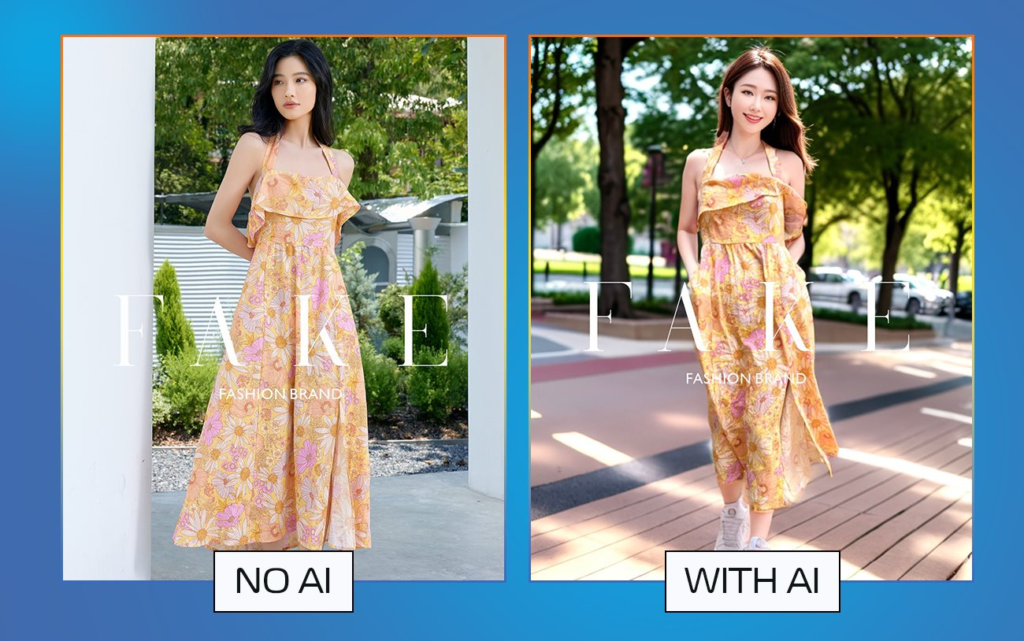
Nevertheless, AI’s substitution does not equate to a wave of struggling job seekers desperately seeking employment. ‘I don’t think we will witness mass unemployment,’ expert Brynjolfsson said. ‘However, we will see widespread disruptions. Salaries for some current jobs will decrease, but they will increase for new jobs that require more AI skills. Labor allocation will occur.’
According to experts, the process of AI implementation can happen rapidly due to the already prepared technological infrastructure. Additionally, in contrast to the hype cycles surrounding cryptocurrencies or the metaverse, AI is entering a mature stage and is being practically applied. Hundreds of millions of users have integrated this technology into their daily work processes.

The pace of AI development sets it apart from previous industrial revolutions. It’s not simply a matter of a textile worker being replaced by a mechanized loom. The transformation due to AI is happening at different levels, within each industry, and what we should do now is invest more in knowledge to avoid being left behind.
The story of Ethan Mollick, a professor at the Wharton School, University of Pennsylvania, is a prime example. He applied ChatGPT to his current work and realized it could create a complete textbook with reliable notes.
” The key to understanding the potential of ChatGPT is recognizing its true strengths. AI will become an effective tool
Ethan Mollick.
According to: Rest of World
AI
Elon Musk’s super AI Grok was created within two months.
The development team of xAI stated that Grok was trained for two months using data from the X platform.
“Grok is still in the early testing phase, and it is the best product we could produce after two months of training,” xAI wrote in the Grok launch announcement on November 5th.
This is one of the AI systems that has been trained in the shortest amount of time. Previously, OpenAI took several years to build large language models (LLMs) before unveiling ChatGPT in November 2022.
xAI also mentioned that Grok utilizes a large language model called Grok-1, which was developed based on the Grok-0 prototype with 33 billion parameters. Grok-0 was built shortly after the company was founded by Elon Musk in July of this year.
With a total time of approximately four months, the company asserts that Grok-1 surpasses popular models like GPT-3.5, which is used for ChatGPT. In scoring benchmarks on mathematical and theoretical standards such as GSM8k, MMLU, and HumanEval, xAI’s model outperforms LLaMa 2 70B, Inflection-1, and GPT-3.5.
For example, in a math problem-solving test based on this year’s Hungarian National High School Math Competition, Grok-1 achieved a score of 59%, higher than GPT-3.5’s score of 41% and only slightly below GPT-4 (68%).
According to xAI, the distinguishing feature of Grok is its “real-time world knowledge” through the X platform. It also claims to answer challenging questions that most other AI systems would reject.

On the launch day, Musk also demonstrated this by asking the question, “the steps to make cocaine.” The chatbot immediately listed the process, although it later clarified that it was just joking.
This is the first product of Musk’s xAI startup, which brings together employees from DeepMind, OpenAI, Google Research, Microsoft Research, Tesla, and researchers from the University of Toronto. Musk is also a co-founder of OpenAI, the organization behind ChatGPT, established in 2015. He later left the company due to disagreements over control. During his departure, he declared his intention to compete for talent from the company while also cutting off the previously promised $1 billion in funding.
Read more: Google, Meta, Microsoft, OpenAI… agree with voluntary measures to protect AI.
AI
AI generation – a new battleground in phone chip design.
Smartphone and mobile chip manufacturers are participating in the wave of AI generation to bring this technology to phones in the near future.
AI generation has exploded over the past year, with a range of applications being released to generate text, images, music, and even versatile assistants. Smartphone and semiconductor companies are also building the latest hardware to not miss out on the wave. Leading the way is Google’s Pixel 8, while Qualcomm’s Snapdragon 8 Gen 3 processor is also set to be launched in the coming days.
The latest signs indicate that phone manufacturers are welcoming AI generation from Google. The Pixel 8 series is the first set of smartphones capable of operating and processing Google’s Foundation Models for AI generation directly on the device without the need for an internet connection. The company stated that the models on the Pixel 8 reduce many dependencies on cloud services, providing increased security and reliability as data is not readily available.
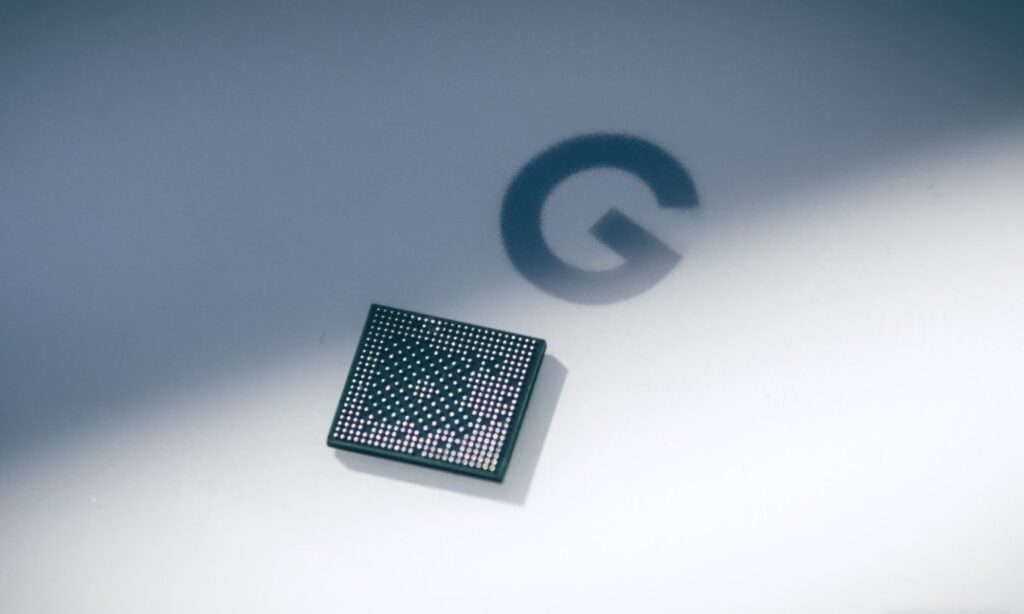
This has become a reality thanks to the Tensor G3 chip, with the Tensor (TPU) processor significantly improving over last year. The company usually keeps the operation of the AI chip secret but has revealed some information, such as the Pixel 8 having double the number of on-device machine learning models compared to the Pixel 6. The AI generation on the Pixel 8 also has the ability to compute 150 times faster than the largest model of the Pixel 7.
Google is not the only phone manufacturer applying AI generation at the hardware level. Earlier this month, Samsung announced the development of the Exynos 2400 chipset with AI computing performance increased by 14.7 times compared to the 2200 series. They are also developing AI tools for their new phone line using the 2400 chip, allowing users to run text-to-image applications directly on the device without an internet connection.
Qualcomm’s Snapdragon chip is the heart of many leading Android smartphones globally, which raises expectations for the AI generation capabilities on the Snapdragon 8 Gen 3 model.
Earlier this year, Qualcomm demonstrated a text-to-image application called Stable Diffusion running on a device using Snapdragon 8 Gen 2. This indicates that image generation support could be a new feature on the Gen 3 chipset, especially since Samsung’s Exynos 2400 also has a similar capability.
Qualcomm Senior Director Karl Whealton stated that upcoming devices can “do almost anything you want” if their hardware is powerful, efficient, and flexible enough. He mentioned that people often consider specific AI generation-related features and question whether the existing hardware can handle them, emphasizing that Qualcomm’s available chipsets are powerful and flexible enough to meet user needs.
Some smartphones with 24 GB of RAM have also been launched this year, signaling their potential for utilizing AI generation models. “I won’t name device manufacturers, but large RAM capacity brings many benefits, including performance improvement. The understanding capability of AI models is often related to the size of the training model,” Whealton said.
AI models are typically loaded and continuously reside in RAM, as regular flash memory would significantly increase application loading times.
“People want to achieve a rate of 10-40 tokens per second. That ensures good results, providing almost human-like conversations. This speed can only be achieved when the model is in RAM, which is why RAM capacity is crucial,” he added.

However, this does not mean that smartphones with low RAM will be left behind.
“On-device AI generation will not set a minimum RAM requirement, but RAM capacity will be proportional to enhanced functionality. Phones with low RAM will not be left out of the game, but the results from AI generation will be significantly better with devices that have larger RAM capacity,” commented Director Whealton.
Qualcomm’s Communications Director, Sascha Segan, proposed a hybrid approach for smartphones that cannot accommodate large AI models on the device. They can host smaller models and allow processing on the device, then compare and validate the results with the larger cloud-based model. Many AI models are also being scaled down or quantized to run on mid-range and older phones.
According to experts, AI generation models will play an increasingly important role in upcoming mobile devices. Currently, most phones rely on the cloud, but on-device processing will be the key to expanding security and operational features. This requires more powerful chips, more memory, and smarter AI compression technology.
AI
AI can diagnose someone with diabetes in 10 seconds through their voice.
Medical researchers in Canada have trained artificial intelligence (AI) to accurately diagnose type 2 diabetes in just 6 to 10 seconds, using the patient’s voice.

According to the Daily Mail, a research team at Klick Labs in the United States has achieved this breakthrough after their AI machine learning model identified 14 distinct audio characteristics between individuals without diabetes and those with type 2 diabetes.
The AI focused on a set of voice features, including subtle changes in pitch and intensity that are imperceptible to the human ear. This data was then combined with basic health information, including age, gender, height, and weight of the study participants.
The researchers found that gender played a determinant role: the AI could diagnose the disease with an accuracy rate of 89% for women, slightly lower at 86% for men.
This AI model holds the promise of significantly reducing the cost of medical check-ups. The research team stated that the Klick Labs model would be more accurate when additional data such as age and body mass index (BMI) of the patients are incorporated.
Mr. Yan Fossat, Deputy Director of Klick Labs and the lead researcher of this model, is confident that their voice technology product has significant potential in identifying type 2 diabetes and other health conditions.
Professor Fossat also teaches at the Ontario Tech University, specializing in mathematical modeling and computational science for digital health.
He hopes that Klick’s non-invasive and accessible AI diagnostic method can create opportunities for disease diagnosis through a simple mobile application. This would help identify and support millions of individuals with undiagnosed type 2 diabetes who may not have access to screening clinics.
He also expressed his hope to expand this new research to other healthcare areas such as prediabetes, women’s health, and hypertension.
-
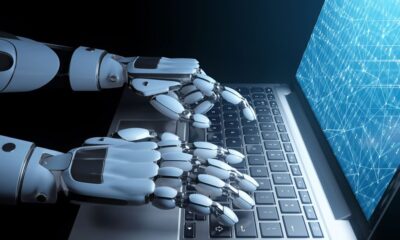
 AI1 year ago
AI1 year agoAI only needs to listen to the sound of keystrokes to predict the content, achieving an accuracy rate of up to 95%
-
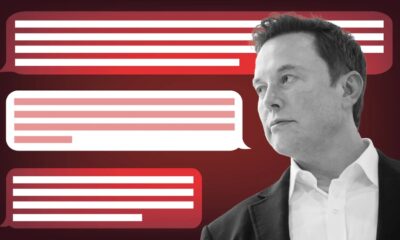
 AI2 years ago
AI2 years agoMusk aims to create a super AI to rival ChatGPT
-

 Mobile2 years ago
Mobile2 years agoProduction issue with iPhone 15 display raises concerns among users
-

 Entertainment2 years ago
Entertainment2 years agoSurprisingly, a single YouTube video has the potential to cause serious harm to Google Pixel’s top-of-the-line smartphone
-

 AI2 years ago
AI2 years agoUpon its debut, Google’s chatbot Bard dealt a cold blow to its very creator.
-

 Entertainment2 years ago
Entertainment2 years agoCS:GO Breaks Records with Surging Gamer Engagement and Increased Spending
-

 Crypto1 year ago
Crypto1 year agoExplore in detail about Web 3
-

 Entertainment1 year ago
Entertainment1 year agoRumors have been circulating about a live-action film about GTA, the creator of the series spoke out to confirm one thing.




